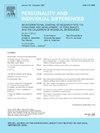Associations between trait shyness and cerebellar spontaneous neural activity are mediated by behavioral inhibition
IF 2.6
2区 心理学
Q1 PSYCHOLOGY, SOCIAL
引用次数: 0
Abstract
Shyness, a personality trait characterized by discomfort and inhibition in social contexts, has a profound impact on individuals' social functioning. Despite its significance, the specific neural mechanisms underlying shyness remain poorly understood. The 2 × 2 model of shyness and sociability posits that shyness arises from a conflict between approach and avoidance motivations. Within this framework, the Behavioral Inhibition System (BIS) and Behavioral Activation System (BAS) are widely regarded as reliable proxies for these opposing motivational tendencies. Therefore, this study employed resting-state fMRI and ReHo analyses to investigate the relationship between trait shyness and spontaneous neural activity in 42 healthy students (Mage = 21.36 ± 2.56), along with the mediating role of the BIS/BAS in this relationship. ReHo analysis revealed a significant association between lower spontaneous neural activity in the posterior cerebellum and higher levels of shyness; moreover, the BIS system partially mediated this link, whereas the BAS system showed no significant mediating effect. Robustness checks using inverse mediation analysis confirmed the specificity and robustness of this hypothesized pathway. These findings highlight the cerebellum's role in modulating individual differences in shyness through localized neural synchrony and emphasize the BIS system as a key mediator, offering potential implications for targeted interventions aimed at enhancing social adaptation in shy individuals.
特质害羞与小脑自发神经活动之间的关联是由行为抑制介导的
羞怯是一种在社会环境中表现为不舒服和压抑的人格特征,对个体的社会功能有着深远的影响。尽管其意义重大,但人们对害羞背后的具体神经机制仍知之甚少。害羞和社交的2 × 2模型假设害羞源于接近动机和回避动机之间的冲突。在此框架下,行为抑制系统(BIS)和行为激活系统(BAS)被广泛认为是这些对立动机倾向的可靠代理。因此,本研究采用静息态fMRI和ReHo分析方法研究了42名健康学生(Mage = 21.36±2.56)的特质害羞与自发性神经活动的关系,以及BIS/BAS在这一关系中的中介作用。ReHo分析显示,小脑后部自发神经活动较低与害羞程度较高之间存在显著关联;此外,BIS系统部分介导了这一联系,而BAS系统没有显著的中介作用。使用反向中介分析的稳健性检查证实了这一假设途径的特异性和稳健性。这些发现强调了小脑在通过局部神经同步调节害羞个体差异中的作用,并强调BIS系统是一个关键的中介,为旨在增强害羞个体社会适应的针对性干预提供了潜在的意义。
本文章由计算机程序翻译,如有差异,请以英文原文为准。
求助全文
约1分钟内获得全文
求助全文
来源期刊

Personality and Individual Differences
PSYCHOLOGY, SOCIAL-
CiteScore
8.50
自引率
4.70%
发文量
577
审稿时长
41 days
期刊介绍:
Personality and Individual Differences is devoted to the publication of articles (experimental, theoretical, review) which aim to integrate as far as possible the major factors of personality with empirical paradigms from experimental, physiological, animal, clinical, educational, criminological or industrial psychology or to seek an explanation for the causes and major determinants of individual differences in concepts derived from these disciplines. The editors are concerned with both genetic and environmental causes, and they are particularly interested in possible interaction effects.
 求助内容:
求助内容: 应助结果提醒方式:
应助结果提醒方式:


